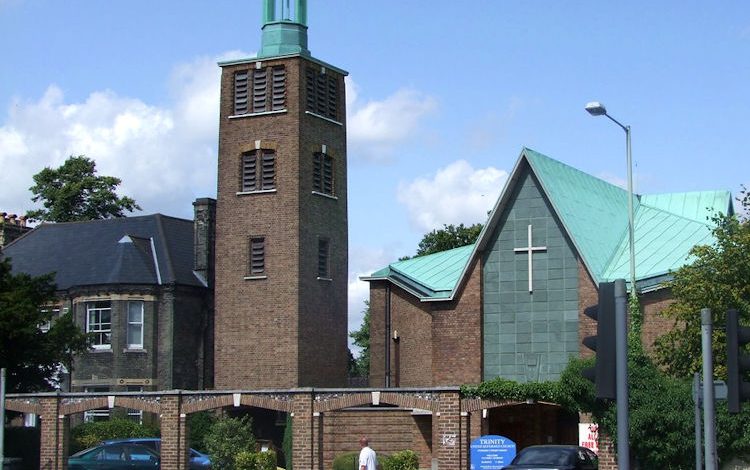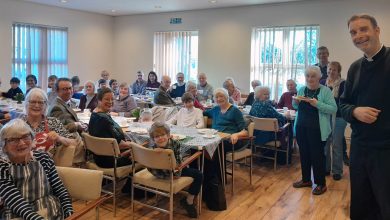Historic Norwich church saved as place of worship

The city of Norwich has been given a new reason to rejoice with the news that Trinity URC, a beloved church that had closed its doors less than a year ago, has been sold to the Catholic Diocese of East Anglia. This new chapter in the church’s history will not only ensure its continued use as a place of Christian worship but also as a hub for community activities. The Diocese has plans to utilize the site as a base for the Syro-Malabar Catholic community, providing a new home for the Diocesan Archive, offices, and teaching spaces. The church’s associated buildings will also be upgraded to accommodate clergy, expand the Cathedral’s car parking, and offer new meeting spaces for the wider community. This redevelopment will not only breathe new life into the church but also complete the fourth side of the Cathedral’s gardens, creating a beautiful cloister-style quadrangle.
The story of Trinity URC is one of hope and renewal. The site was originally home to Unthank Road Baptist Church, which was demolished in 1956 to make way for the construction of Trinity URC. The new church was built by the renowned architect Bernard Feilden and is widely regarded as one of the most striking and memorable post-war churches in Norwich. Its Grade II listed status is a testament to its architectural significance, and its integration into the wider site will enhance the beauty of the Cathedral’s gardens. The Diocese of East Anglia’s decision to purchase the church is a testament to its commitment to preserving and promoting the city’s rich spiritual heritage. With over 1000 people attending St John’s Cathedral every week for worship, the acquisition of Trinity URC will provide much-needed additional space for the growing community.
The Catholic Diocese of East Anglia has outlined its vision for the church’s future, which includes using it as a sustainable base for the Syro-Malabar Catholic community. This community, which originated in South India, will find a new home in Trinity URC, allowing them to worship and come together in a beautiful and historic setting. The church’s associated buildings will also be renovated to provide offices, teaching spaces, and meeting rooms, making it an ideal hub for community activities. The expansion of the Cathedral’s car parking facilities will also make it easier for visitors to access the site, whether they are attending a worship service, a guided tour, or simply wanting to explore the beautiful gardens. With the Cathedral’s café already offering a warm welcome to visitors, the redevelopment of Trinity URC will further enhance the site’s appeal as a destination for both locals and tourists.
The purchase of Trinity URC is a significant investment in the city’s spiritual and cultural landscape. The Diocese of East Anglia has confirmed that the purchase is being funded by the sale of unused Diocesan properties, ensuring that the acquisition does not place a burden on the Diocese’s day-to-day budget. This forward-thinking approach has been welcomed by the Moderator of the United Reformed Church Eastern Synod, Rev Lythan Nevard, who expressed his hope that the church would become a new place of worship once again. As he so eloquently put it, “The worshipping life of Trinity URC may be coming to an end, but the worship of God and the building of God’s kingdom continues.” This sentiment is a powerful reminder that the true value of a church lies not in its physical structure but in the community that comes together to worship, serve, and support one another.
The redevelopment of Trinity URC is not only a celebration of the church’s rich history but also a testament to the power of faith and community. As the church begins its new chapter, it is expected that the works to upgrade the site will take some time, led by the Cathedral’s architect, Nicholas Warns. The attention to detail and commitment to preserving the church’s architectural integrity will ensure that the finished product is a beautiful and functional space that meets the needs of the community. With the Cathedral recently receiving a significant grant from Historic England for a major programme of repair works, the acquisition of Trinity URC is a timely reminder of the importance of preserving our cultural heritage for future generations. As the city of Norwich looks to the future, the redevelopment of Trinity URC is a shining example of what can be achieved when faith, community, and vision come together.
As the people of Norwich look forward to the new chapter in Trinity URC’s history, they can take comfort in the knowledge that the church’s legacy will live on. The sale of the church to the Catholic Diocese of East Anglia has ensured that the site will continue to be used for worship, education, and community activities, providing a vibrant and inclusive space for people of all ages and backgrounds. As the church’s story unfolds, it is clear that its impact will be felt far beyond its walls, inspiring a new generation of believers and community leaders. With its rich history, stunning architecture, and commitment to serving the community, Trinity URC is poised to become a beacon of hope and faith in the heart of Norwich, a testament to the power of collaboration, vision, and faith in action. As the city’s spiritual landscape continues to evolve, the redevelopment of Trinity URC is a powerful reminder that even in the darkest of times, there is always hope for a brighter future.








